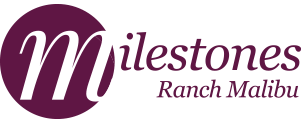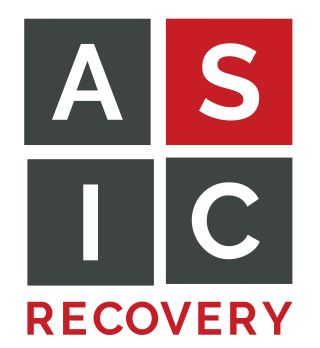Sober Living: A Vital Step Toward Long-Term Recovery from Substance Abuse and Mental Health Struggles
Sober living homes serve as a structured bridge between inpatient treatment and full reintegration into everyday life. For individuals recovering from substance use disorders or co-occurring mental health conditions, sober living provides a stable, substance-free environment where residents can continue healing while gradually regaining independence. These homes, sometimes called recovery residences or transitional housing, emphasize accountability, peer support, and a community-driven lifestyle. They offer an essential layer of support for people who are not yet ready to return to environments that may trigger relapse. While sober living is not a replacement for clinical treatment, it plays a crucial role in relapse prevention and long-term recovery maintenance.
What Is Sober Living and How Does It Work?
Sober living homes are residential facilities that promote a drug- and alcohol-free lifestyle for individuals in recovery. Unlike inpatient rehab programs, these homes do not offer clinical services onsite (unless they are hybrid models), but they do require residents to follow strict rules, maintain sobriety, and often participate in recovery-related activities. Residents typically share communal living spaces and are responsible for paying rent, performing household chores, and following curfews. Many homes operate under a tiered structure of independence, allowing residents to earn more freedom over time based on their progress. Most sober living environments also encourage or require attendance at 12-step meetings, therapy sessions, or outpatient treatment programs to reinforce ongoing recovery work.
Sober living is especially helpful for individuals who have completed a residential or detox program but still need a safe, structured space to rebuild daily routines. These environments emphasize community, shared responsibility, and peer accountability—elements shown to improve recovery outcomes. Depending on the facility, residents may stay for several months or even a year as they gain confidence and reestablish work, school, or family commitments.
Who Benefits from Sober Living and What Are the Common Rules?
Sober living homes are ideal for people in early recovery who need additional time in a supportive environment before returning to full independence. This includes individuals exiting inpatient rehab, those enrolled in outpatient programs, and even people who have experienced relapse and want to re-stabilize. Many homes also accept individuals dealing with co-occurring disorders such as anxiety, depression, PTSD, or bipolar disorder, provided they have a treatment plan and can manage their symptoms without on-site clinical intervention.
Mental Health, Structure, and Long-Term Outcomes
Sober living isn’t just about avoiding substances—it’s about learning to live a fulfilling, balanced life in recovery. For individuals dealing with co-occurring mental health conditions, the stability of sober living can support continuity of care and symptom management. Residents are typically encouraged to maintain therapy appointments, medication regimens, and psychiatric care during their stay. Many homes work collaboratively with outside treatment providers to support residents’ overall mental wellness.
Studies show that individuals who transition through sober living homes have higher rates of abstinence, improved employment outcomes, and better mental health stability compared to those who return directly to their previous environments after rehab. The gradual reintroduction to daily responsibilities—while surrounded by a recovery-focused community—reduces isolation and increases resilience against relapse triggers. For many, sober living serves not only as a residence but also as a launchpad for sustained, meaningful change.
FAQs – Sober Living
The main difference is that rehab facilities are usually short-term and clinically driven, with structured programming that includes licensed therapy and medical oversight. In contrast, sober living is a longer-term support option meant to bridge the gap between treatment and full independent living. Many individuals move into sober living after completing inpatient or outpatient treatment to maintain recovery momentum while gradually reintegrating into work, school, or family life.
Some sober living homes are specialized for certain populations, such as women, men, LGBTQ+ individuals, veterans, or young adults. Others may accommodate those with co-occurring mental health conditions, provided they are stable and managing their symptoms. Residents are usually expected to agree to house rules, attend meetings, and actively participate in their recovery.
That said, some sober living homes voluntarily seek accreditation or membership from reputable organizations such as the National Alliance for Recovery Residences (NARR) or state-level sober living coalitions. These organizations set best practices for safety, ethics, peer support, and resident rights. Accreditation ensures that a home adheres to quality standards such as staff training, a clear grievance policy, structured programming, and drug screening protocols.
Insurance typically does not cover the cost of sober living, as it is considered a non-clinical, supportive housing service rather than medical care. However, if a sober living home partners with an outpatient treatment provider, some clinical components may be billable through insurance. Residents are usually responsible for rent, food, and other personal expenses, although some homes offer scholarships, payment plans, or sliding-scale fees.
Example: Having a job or educational pursuit helps residents develop routine, purpose, and accountability—all of which are crucial for long-term recovery. Homes often have curfews or drug testing policies, but they are generally flexible when it comes to accommodating work or school schedules. Some sober homes may even help residents with job placement resources or transportation options.
Longer stays are often associated with better outcomes, as they allow residents more time to build stable routines, secure employment, and strengthen social support systems. The decision to leave is often made collaboratively between the resident, house manager, and any treatment providers involved.
Other rules may include respectful conduct toward housemates, prohibiting overnight guests, and being actively involved in work, school, or outpatient treatment. Violations of house rules—especially substance use—can result in warnings, probationary periods, or dismissal from the home, depending on the severity of the infraction and the home's policies.
In these hybrid models, residents may live in the sober home while attending intensive outpatient programs (IOPs) during the day. These arrangements blend the supportive community of sober housing with structured clinical care, especially helpful for dual-diagnosis clients.
For individuals with co-occurring disorders (such as anxiety, depression, or PTSD alongside substance use), sober living can provide a buffer between clinical treatment and the challenges of independent living. Residents gain life skills, relapse prevention tools, and a sense of belonging, all of which contribute to better mental health outcomes and lower relapse rates.
Visit the home in person if possible, ask about staff credentials, house rules, relapse policies, and whether residents are required to attend recovery meetings. Ask for a copy of the resident agreement and clarify costs. A reputable home should be transparent, provide a clean and supportive environment, and demonstrate a commitment to ethical recovery support.
Conclusion - Sober Living
Sober living homes play a critical role in the recovery journey by offering a structured, substance-free space where individuals can rebuild their lives. For those recovering from addiction and co-occurring mental health disorders, the combination of peer support, accountability, and daily stability fosters resilience and lowers relapse risk. While sober living is not a substitute for therapy or medical care, it effectively bridges the gap between intensive treatment and full independence. By reinforcing healthy routines and offering a strong support system, sober living homes help individuals lay the groundwork for lasting recovery.
Sources:
- National Institute on Drug Abuse (NIDA). “Principles of Drug Addiction Treatment.” nida.nih.gov
- Journal of Psychoactive Drugs. “A Clean and Sober Place to Live: Philosophy, Structure, and Purported Therapeutic Factors in Sober Living Houses.” ncbi.nlm.nih.go
- Substance Abuse and Mental Health Services Administration (SAMHSA). “Recovery Housing.” samhsa.gov








